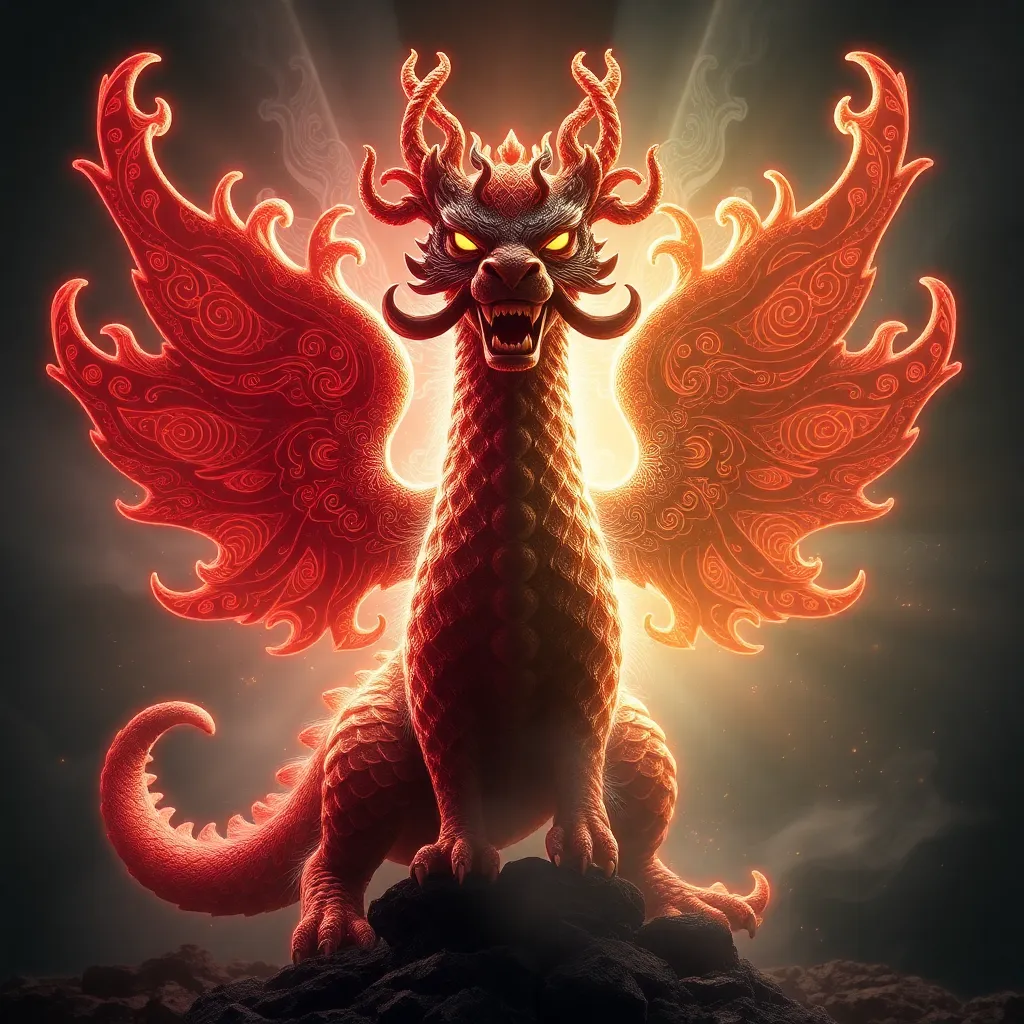The Simurgh and the Seven Jewels: A Tale of Abundance and Divine Power
I. Introduction
The Simurgh is a magnificent and mythical bird in Persian mythology, often depicted as a benevolent creature embodying wisdom, protection, and guidance. This mythical being plays a central role in various tales, most notably in the narrative of the Seven Jewels. The Seven Jewels not only represent material wealth but also symbolize the abundance of spiritual gifts bestowed upon humanity. This article explores the significance of the Simurgh and the Seven Jewels, delving into the themes of abundance, divine power, and the lessons that can be gleaned from this rich tapestry of mythology.
II. The Simurgh: A Symbol of Wisdom and Protection
The Simurgh is often described as a large, colorful bird resembling a peacock or a phoenix, with extraordinary features that set it apart from other creatures. Its wings are said to be adorned with vibrant feathers that shimmer in the sunlight, and its eyes are filled with ancient wisdom. The Simurgh is a symbol of divine power, representing the connection between the earthly realm and the heavens.
In Persian folklore, the Simurgh serves as a guardian, guiding heroes and seekers on their journeys. Its role extends beyond mere protection; it provides counsel and insight, helping individuals navigate the trials they face. The Simurgh embodies hope, resilience, and the promise of renewal, making it a cherished figure in Persian mythology.
As a protector and guide, the Simurgh teaches that wisdom is found not only in knowledge but in the journey of seeking truth and understanding. Its presence in stories serves as a reminder of the importance of mentorship and the support we receive from those who have walked the path before us.
III. The Seven Jewels: Representations of Abundance
The Seven Jewels are integral to the narrative surrounding the Simurgh, each jewel representing a unique aspect of abundance and prosperity. These jewels are often associated with various virtues, such as:
- Wisdom: Knowledge and understanding
- Strength: Resilience and courage
- Beauty: Aesthetic and inner grace
- Wealth: Material and spiritual riches
- Health: Well-being and vitality
- Harmony: Balance and peace
- Joy: Happiness and fulfillment
Historically, these jewels held significant cultural value in Persian society, often symbolizing the ideal state of being that individuals aspired to attain. They were seen as divine gifts, reflecting the abundance that the universe has to offer. The Seven Jewels signify the interconnectedness of material and spiritual wealth, emphasizing that true abundance encompasses more than just physical possessions.
IV. The Mythological Journey: The Quest for the Jewels
The narrative of the Simurgh and the Seven Jewels unfolds as a mythological journey, filled with challenges and transformations. The story typically follows a hero who seeks the Seven Jewels, guided by the Simurgh. This quest is not merely a search for material wealth but a profound exploration of self-discovery and spiritual growth.
Key characters in this tale include:
- The Hero: The brave seeker who embarks on the journey.
- The Simurgh: The wise bird providing guidance and protection.
- Antagonists: Forces that challenge the hero’s resolve and aim to deter them from their quest.
Throughout the journey, the hero faces numerous challenges, each representing internal and external conflicts. These challenges serve a dual purpose: testing the hero’s character and teaching valuable lessons about resilience, humility, and the importance of seeking wisdom. Ultimately, the quest culminates in a deeper understanding of what it means to possess true abundance.
V. Themes of Abundance and Divine Power
The themes of abundance and divine power are intricately woven into the fabric of the tale. The Simurgh represents the divine aspect of abundance, while the jewels embody the tangible manifestations of that abundance in the human experience. The interplay between these two elements highlights the importance of both divine guidance and human effort in achieving a fulfilled life.
Exploring abundance within this context reveals that it is not solely about material wealth but encompasses emotional, spiritual, and relational richness. The narrative teaches that true abundance comes from aligning oneself with divine purpose and recognizing the gifts that life offers.
Lessons learned from the Simurgh and the Seven Jewels include:
- The value of seeking wisdom and guidance.
- The importance of resilience in the face of challenges.
- The understanding that abundance is a holistic experience.
VI. The Legacy of the Simurgh and the Seven Jewels
The tale of the Simurgh and the Seven Jewels has profoundly influenced Persian literature and culture, inspiring poets, artists, and storytellers for centuries. Its themes resonate across generations, reflecting the human quest for meaning and understanding. The narratives surrounding the Simurgh have been adapted in various forms, from poetry to visual arts, showcasing its enduring appeal.
Modern interpretations often draw parallels between the ancient story and contemporary issues, emphasizing the relevance of the lessons learned. The Simurgh continues to serve as a symbol of hope and resilience, encouraging individuals to seek their own paths toward abundance and wisdom.
VII. Comparative Analysis: Similar Myths in Other Cultures
The themes of abundance, wisdom, and divine guidance are not exclusive to Persian mythology; similar motifs can be found in various cultures around the world. For instance:
- The Phoenix: In Greek mythology, the phoenix symbolizes rebirth and immortality, much like the rejuvenating powers of the Simurgh.
- The Garuda: In Hindu mythology, Garuda represents strength and protection, akin to the guiding role of the Simurgh.
- The Dragon: Many cultures view dragons as symbols of power and wisdom, paralleling the divine attributes of the Simurgh.
These cross-cultural perspectives reveal universal themes of abundance and the quest for divine guidance, illustrating how different societies interpret similar archetypes and narratives. The enduring nature of these myths speaks to the collective human experience and the search for meaning in a complex world.
VIII. Conclusion
In conclusion, the tale of the Simurgh and the Seven Jewels offers profound insights into the nature of abundance and divine power. Through the rich symbolism of the Simurgh and the multifaceted meanings of the Seven Jewels, readers are invited to reflect on their own journeys and the lessons they can learn from this ancient narrative.
This story serves as a reminder of the importance of seeking wisdom, embracing challenges, and recognizing the abundance present in our lives. As we explore the richness of Persian mythology and its teachings, we find timeless lessons that resonate with the human experience, encouraging us to seek our own paths toward fulfillment and understanding.
https://www.youtube.com/watch?v=c2fTjGMQgmA



